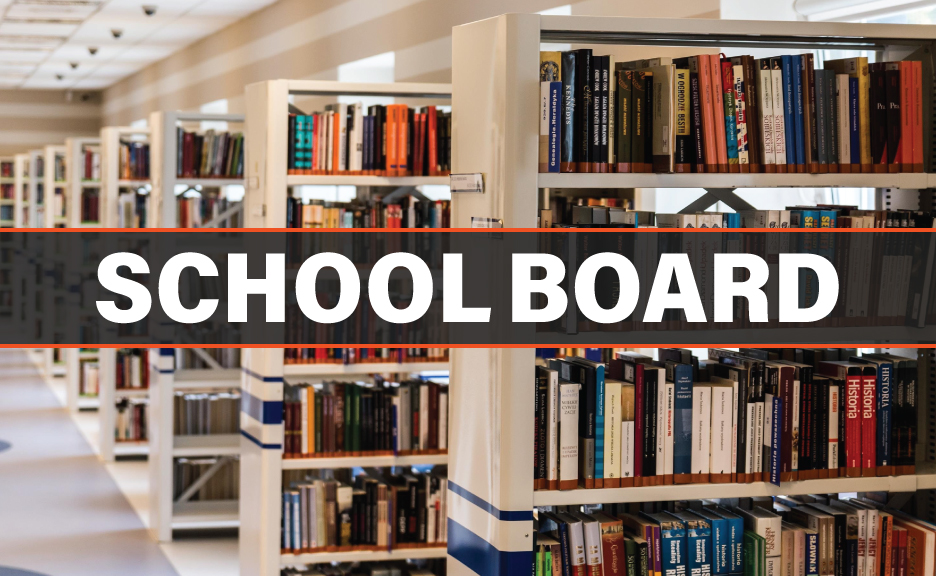By Sean C. Morgan
Lebanon Local
The Lebanon School Board voted Thursday evening to enact a construction excise tax of $1.25 per square foot on new construction to help pay for costs associated with growth in the community.
“This has been a partnership between the city and the School District since 2017,” Business Director Will Lewis told the City Council Wednesday in a presentation on the proposed tax. At that time, a group including the city, the School District, Western University and community members put together a checklist of things that needed to be done in order to proceed with the construction excise tax.
Lewis told the board Thursday night, during its regular meeting, that it needed to decide a couple of variables, the rate. The board had been considering a rate between $1.25 and $1.35, the maximum allowed this year under state law. The rate can increase annually based on the construction cost index.
Lewis said the district is projecting tax revenue of more than $200,000 at the maximum rate.
The city doesn’t necessarily track square footage by building permit, Lewis said, which makes it difficult to estimate precisely.
The second variable was whether to impose the tax only on new construction or to include remodeling and additions.
“My preference would be only to assess the construction excise tax on new construction,” said Chairman Tom Oliver. “The premise being that it’s a new impact on us.”
Oliver also suggested that the district adjust the tax annually based on the cost index to avoid letting it stay flat for a long period and then making a large adjustment.
Board members Mike Martin and Richard Borden agreed.
Martin suggested a rate of $1.25, which gives the board room to go either direction in the future.
“It’s middle of the road,” Borden said. “I think that’s good.”
“I’m not a big tax supporter,” Martin said. “But I think this is a responsible tax. It’s something that we need to do for the schools, for the community, for student achievement, for everything. It’ll relieve, take a little pressure off some of the finances and allow us to spend it on personnel.”
The School Board last year approved the key step, a long-range facilities plan, Lewis told the City Council. The district obtained four grants from the Oregon Department of Education to pay an architect to develop a 350-page plan.
“The final piece of the task list is now done, complete,” Lewis said. The plan is required by state law prior to implementing a construction excise tax.
A school district may impose a tax on new construction based on square footage, Lewis said. The maximum tax this year is $1.35 per square foot for residential property and 65 cents per square foot with a cap of $33,700 on non-residential property.
Some construction is exempt, Lewis said. That includes private schools, public buildings, HUD affordable housing, hospitals and churches, for example.
Revenue from the tax must be used for capital projects, Lewis said. It may be used to acquire land; construct, reconstruct or improve school facilities; acquire or install equipment, furnishings and other tangible property; and to pay capital improvement debt.
It cannot be used for operating costs or routine maintenance, Lewis said.
“The idea is how can we incorporate new growth into our schools?” Lewis said. “If we have a hundred-house development, how do we incorporate that into our schools? We know based on data that good quality facilities have a direct impact on student outcomes, so our goal is to keep our facilities at the highest level.”
The next step is to enter into agreements with local governments, the city and Linn County, and begin to collect the tax, Lewis said. The city and county may charge the district a fee to collect the tax.
In the area, Albany and Corvallis have implemented construction excise taxes, Lewis said. Albany has maintained a rate of $1 per square foot while Corvallis increases its rate annually.
Lewis expects to return to the City Council within the next month or so with an intergovernmental agreement for the council’s approval.
“It’s a penalty for new homeowners,” said Bill Sullivan during the council meeting. “They’ve got plenty of property tax. Anyway, I pay a hell of a lot more than I think I should for schools.”
Aziz asked him how the district can keep up its buildings as new houses and students come in, increasing expenses, while the district has a set level of taxes – if 300 more children, which is several classrooms, are in the district.
If the district has 300 new students, he replied, then it has 150 new households paying taxes.
“The capital dollars are not really coming through our property taxes for schools,” said Councilor Wayne Rieskamp. “You probably voted for or against capital project bonds for schools. That’s what this money will go to, capital projects.”
Present at the board meeting were Borden, Oliver and Martin. Tammy Schilling was absent. The fifth position is vacant.
In other business, the board:
♦ Approved the school calendar for the 2020-21 school year.
School will begin on Aug. 31 and end on June 9.
Supt. Bo Yates said his team preferred starting before Labor Day because the holiday is so late this year.
Oliver said he generally prefers and many parents prefer to start school after Labor Day but noted that it’s late. He suggested, and the board agreed, to make Sept. 4, Friday of the first week, no school to allow a four-day weekend for end of summer activities.
The board adjusted by making June 4 a school day. That day was scheduled no school for the Strawberry Festival or for use as a snow day.
In the approved calendar, Christmas break starts Dec. 21, and class resumes on Jan. 4. Spring break is March 22 to March 26. Graduation is set for June 8, and classes end June 9.
♦ Approved the district’s application for Student Investment Account funds, part of the Student Success Act.
The district expects to receive $3.4 million and proposes to spend $3 million to pay for approximately 45 full-time equivalent certified and support staff and 22 certified and support staff for K-6 summer school.
The district proposes to spend $105,000 on a pre-kindergarten transition program, including $15,000 on a playground area to expand the program from 20 to 80 next year, Yates said.
“At least half of our funding is going to our elementaries,” Yates said. “The vast majority of that is going toward K, 1, 2, 3.”
Among the expenditures is $900 for 24 instructional assistants for the kindergarten through the third grade, one for each kindergarten and one per grade level, three to five assistants at each elementary school targeted at the district’s literacy goal.
Five teachers on special assignment will be dedicated to each elementary schools except Lacomb, where a teacher will spend half time as a TOSA, to provide behavior support and handle PBIS, Yates said. “We want the principals to be more responsible for the outcomes in their school. In order to do that, they can’t be chasing kids around doing behavior all the time. They have to be in classrooms doing instructional strategies.”
The plan places four instructional assistants at Seven Oak Middle School. The district also would like to hire a career and technical education teacher there and $45,000 to build a classroom to serve as a CTE lab.
Other expenditures include a half-time alternative education administrator and half-time counselor. At the district office, the plan proposes a part-time assessment coordinator, Spanish translator and an engagement coordinator as well as two full-time mental health counselors.
In special education, it proposes a new teacher and four instructional assistants. The plan also includes a bilingual liaison and a bilingual instructional assistant and $30,000 in instruments for the music program, replacing old, worn gear.
The purpose of the SIA funding is to meet students’ mental and behavioral needs and to increase academic achievement for students, including the reduction of academic disparities for economically disadvantaged students, racial groups that experience disparities, students with disabilities, English language learners, foster children and the homeless.
♦ Approved the hiring of Tayo Mulholand as an elementary teacher.
♦ Approved policy updates regarding board standards of conduct, unmanned aircraft systems, student transportation, equal employment opportunity, drug and alcohol testing, compulsory attendance, admissions and expulsion.
♦ Held the first reading of policy updates regarding licensing requirements and medications.





